The Big Event and other disabled motoring events announced for 2020
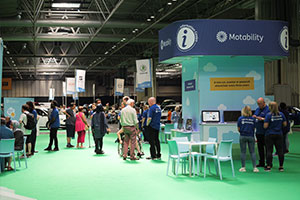
Following last summer’s successful programme of events, The Big Event will be returning to the NEC in Birmingham on 3 and 4 July 2020. The flagship show houses the UK’s largest display of cars, Wheelchair Accessible Vehicles (WAVs), powered wheelchairs and scooters for disabled people, with cars also available to test drive. In addition to the event in Birmingham, there will be five regional One Big Days taking place across the UK. The 2020 disabled motoring events dates are: • Friday 3 and Saturday 4 July, The Big Event at the NEC, Birmingham • Saturday 6 June, One Big Day at the Eikon Exhibition Centre, Northern Ireland • Saturday 25 July, One Big Day at Westpoint, Exeter • Saturday 15 August, One Big Day at Yorkshire Event Centre, Harrogate • Saturday 5 September, One Big Day at East of England Arena, Peterborough • Saturday 19 September, One Big Day at Royal Highland Centre, Edinburgh The events are free to attend, with free parking too. They offer disabled people and their families a great way to find out more about leasing a car, WAV, powered wheelchair or scooter through the Motability Scheme’s worry-free leasing package. While The Big Event at the NEC is the largest show of the year, all the events have a wide range of cars on display as well as Wheelchair Accessible Vehicles (WAVs), adaptations, scooters and powered wheelchairs. There are also helpful Motability Scheme advisors to answer questions about the Scheme, as well as representatives from the Scheme partners, RAC, RSA and Kwik Fit. Information will also be available from Disabled Motoring UK. Visitors can test drive adapted and standard cars with a professional instructor to help find out which vehicles are best suited to their individual needs. Test drives can be booked on the day – visitors simply need to bring along their full driving licence and choose a car to test drive. Alison Beasley, One Big Day Event Manager, said: “The One Big Day events have continued to be extremely popular and attracted nearly 20,000 visitors in 2019 and we’re excited to welcome even more people to the events next year. The Big Event at the NEC is our most popular show as there is plenty of room to not only showcase the largest display of products on the Scheme but to also host expert speaker sessions, provide visitors with an indoor scooter test drive area and the opportunity to discover what it’s like to travel in a passenger WAV for the first time.” All visitors receive a free tea, coffee or soft drink and the whole family is welcome to come along. Children can meet the Scheme mascot, Billy the Bear, who is always happy to take selfies. There will also be free face painting and a kid’s play area as well as cafés, plenty of seating, and accessible toilet facilities. Ear defenders are available at all the events, and a sensory quiet room space can be found at each venue. Find out more about The Big Event and the regional One Big Days online at motability.co.uk/news/one-big-day/ and for the latest announcements, pictures and videos, visit the Motability Scheme Facebook page (facebook.com/motability). For more information on leasing a car, scooter or powered wheelchair through the Motability Scheme, visit motability.co.uk or call 0800 953 7000.
Can I get a Motability Scheme car?
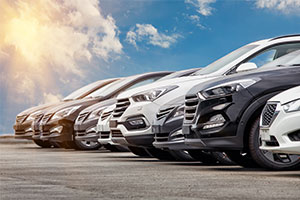
The Motability Scheme is the UK’s leading car, scooter and powered wheelchair scheme, enabling people to get mobile by exchanging their mobility allowance to lease a new vehicle. Motability Scheme customers simply exchange all, or part of their mobility allowance, to lease an affordable, new car. Customers can enjoy worry-free motoring as they have the freedom and reassurance of a new car with none of the worries associated with buying and running an older one. The Scheme is available to those who receive the Higher Rate Mobility Component of the Disability Living Allowance, the Enhanced Rate of the Mobility Component of Personal Independence Payment, War Pensioners’ Mobility Supplement or the Armed Forces Independence Payment. Recipients can exchange their weekly mobility allowance to lease a new vehicle of their choice. To be eligible, recipients will need to have at least 12 months or more of their allowance award remaining and they can also apply on behalf of a child aged three or over who receives a relevant allowance. Over 600,000 customers currently use the Motability Scheme to keep them mobile. Whichever car customers choose, the worry-free package includes insurance, breakdown assistance, servicing, MOT, tyre replacement and windscreen repair. The Motability Scheme allows up to three named drivers, who can be the customer, their friends, family or carers. It’s easy to search the full range of cars available on the Motability Scheme website. The online search tool allows customers to search by a number of different options according to their needs. Customers can even create a shortlist and compare up to four of their favourite cars side by side, with the option to then arrange test drives in their chosen vehicles with one of the 5,000 Motability dealerships across the country. There are three pricing options available for those looking to lease a car through the Motability Scheme: 1) Cars that cost less than your mobility allowance – these cars are available to lease at a fixed weekly amount for the whole of the agreement, meaning that the remainder of the allowance, including any increases, will be paid directly to the customer by the Department for Work and Pensions (DWP). 2) Cars that cost all of your mobility allowance – customers simply pay all of their weekly mobility allowance, including any annual increases from the DWP, to lease their car through the Scheme. 3) Cars that cost all of your mobility allowance, plus an Advance Payment – customers can increase their choice of cars by paying a non-refundable payment upfront, known as the Advance Payment. This covers the difference between the allowance amount and the total cost of the lease. The Motability Scheme doesn’t just offer cars. There are also options for Wheelchair Accessible Vehicles (WAVs), adaptations, scooters and powered wheelchairs. There’s a wide selection of WAVs available through the Scheme including small, medium and large, as well as ‘Nearly New’ WAVs, to cover a range of accessibility needs. Find out more at www.motability.co.uk.
Should you convert to an automatic car or buy new – 2019
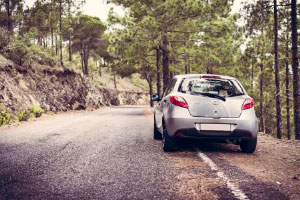
Automatic cars are as popular as ever, and they can often be easier to dive if you’re living with a disability. So, if you currently have a manual and you’re thinking about switching, should you buy a new automatic car or convert your vehicle? Here, Mark Barclay from GSF Car Parts gives his advice to help you decide. The number of automatic cars on Britain’s roads has increased by around 70% since 2007, according to data released by the Society of Motor Manufacturers and Traders (as reported by The Telegraph). But why are they so popular? An automatic vehicle contains something called a torque converter, which transfers the power from the engine to the transmission. It takes the place of the clutch pedal in a manual and, because you don’t need to manually change gear, drivers across the UK are preferring the ease and safety with which they can drive an automatic. And, for people living with a disability, not having to press the clutch pedal or even move the gear stick while driving can make things a whole lot easier. With automatic transmission becoming increasingly more popular in the form of electric and hybrid vehicles, it’s likely that manual cars will disappear from the UK’s roads in a matter of years (RAC). So, if you haven’t already, you should make the switch. But if you currently have a manual, how can you change to an automatic? Buy new Trading your car in for an automatic model would be the easiest choice, and you’ll have the added benefit of some more modern technologies and extra perks that are only available in newer car models. But often automatic cars can be more expensive to buy than a manual vehicle, even if you buy second-hand. And, if you already have modifications made to your car, like a people lift or wheelchair hoist, you’re going to have to reinstall them which could end up costing you even more money. Convert to automatic Converting a manual car to an automatic is quite a common modification for people who have disabilities that can affect their mobility, which could make manual driving a challenge. But a full modification could also prove difficult and could be more expensive than buying a new car.Because automatic cars are controlled through an internal computer, your car’s existing computer will need to be removed, replaced and rewired as part of the conversion process. This is why older cars are often easier to convert to automatic, since they tend to have much fewer computerised parts. A mechanic will also need to replace the gearbox console and engine control unit, remove the manual clutch system and install the automatic transmission, among other things. Opt for a semi-automatic Converting to an automatic can be an extremely complicated and specialist process. That’s why it can often be a better option to convert to a semi-automatic, which uses the same computers as an automatic in the place of a clutch pedal, but all the other manual components can remain. This means that you’ll be able to switch gears manually with the gear stick, without having to use the clutch pedal. Because fewer components need to be removed or replaced, the conversion process to turn your manual into a semi-automatic is often a lot easier and cheaper to carry out than if you were to convert to a fully automatic transmission. However, the movement from one gear to another isn’t as smooth as in a fully automatic or manual vehicle, so you may want to consider a dual-clutch transmission, which uses one clutch to control even-numbered gears and another to control the odd numbers. This allows for a much smoother transition and doesn’t require a clutch pedal, so this may be the best option if you want to keep all your other modifications but remove the clutch. Making the switch to an automatic could be a lifechanging move if you’re driving with a disability. Whether you choose to buy a new car or convert your current one, the tips in this guide will help you decide which option is the best for you.
How to make your garden accessible
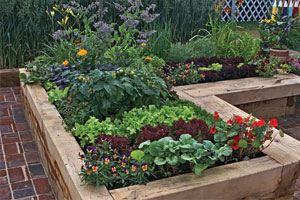
There are so many health benefits to gardens – from improved sleep to better mental health, how to make your garden accessible. A study by researchers Soga, Gaston & Yamaura published on Science Direct found: “Participating in gardening activities has a significant positive impact on health. Indeed, the positive association with gardening was observed for a wide range of health outcomes, such as reductions in depression and anxiety symptoms, stress, mood disturbance, and BMI, as well as increases in quality of life, sense of community, physical activity levels, and cognitive function.” As a garden is such a communal space, a disability should not stop you from using yours. There are lots of measures you can take to ensure your green space is easier to maintain and that you can get to every part of it without any problems. This guide from Arbordeck timber and composite decking specialists will advise on making your garden accessible so that you can get out in the open air and enjoy working and relaxing in your garden – as long as the British weather permits! Taking care of flowerbed When it comes to the garden, i.e. when you’re trying to reach flowers and plant them, it gets harder to bend down for long periods of time and tend to them properly. However, if you’re worried about this, then raised flowerbeds can be a great way of avoiding this difficulty altogether. If you’re able to bend down for a short while, or you’re in a wheelchair or mobility scooter, then you should have flowerbeds that are 18-24 inches off the ground. Alternatively, if you can’t bend down at all, then you should opt for flowerbeds that are 30 to 36 inches off the ground. For mobility scooters, you need sturdy pathways to accommodate easy navigation. The paths should be around 3-4 ft or 91-121cm wide; providing you with enough room and access to every corner of your garden. Don’t forget about turning space too. Try to ensure that your pathways are made of a surface that isn’t slippy and provides you with enough grip so that you don’t fall. If you use a gravelled surface, then this should provide enough safety for anybody using your garden. If you use flagstone or tarmac, then these are cost-effective materials that will last a long time and offer your ground support in terms of grip and safety. Creating a relaxing space Your garden may be accessible, but it also needs to be enjoyed. This means you need a place to zone-out and relax. If you place an outdoor sofa or bench in the corner of your garden, then this can become a mini-retreat within an already tranquil setting – providing you with greater comfort within your garden. For a more alternative approach, you could embed seating areas within your plants to create a floral atmosphere while you’re sitting relaxed. Think about decking For many gardens, laying down some decking boards can create a centre-piece that hosts all of your outdoor activities. It can be a place where you sit and admire your green space! If you’re older and think decking would be a good idea for your garden, it’s important to choose the right boards that will be a reliable safe space within your garden. You should also think about other aspects of your garden too. Some people may require assistance from handrails, for example, which should be built in by professionals. Gardens are a great space where you can socialise with family or friends and if you make it more accessible for yourself and others, then you can enjoy it for years to come without any compromises.
The Lin Berwick Trust – the disabled holiday accommodation specialists
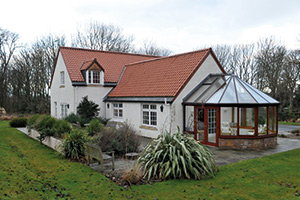
The Lin Berwick Trust has the highest standard of facilities and equipment for those with disabilities who need 24/7 care. We have three self-catering properties all sleeping six people in Norfolk, Cornwall and on the Firth of Forth in Scotland. Each property has a disability suite that is second to none both in equipment and space. All our properties are furnished to VisitBritain’s four-star self-catering standard and considerably better equipped than is required for VisitBritain’s accessibility rating of “Access Exceptional”. The spacious properties have been designed for the comfort of the disabled visitor as well as that of their family members or carers, and are in attractive village or country settings. Ralph Boyce House, in Cornwall, is in the unlikely sounding village of No Man’s Land, which you will find is not true – it overlooks a beautiful valley, only a short distance from the coast and the old smuggling port of Looe with its beach, small fishing port, restaurants, cafés, pubs, shops and services. This single story purpose-built property sleeps six (two with disabilities) and makes your holiday both easy and peaceful in its surroundings “far from the madding crowd”! There’s lots to do in this stretch of the Cornish coast which has stunning scenery and unique coastal towns and villages. The house has a substantial vaulted family room with sitting/dining/kitchen areas with French windows on to a terrace, with garden furniture, overlooking the magnificent view of the valley. The disability suite has twin profiling beds in the bedroom with French windows giving on to the garden. It has an overhead hoist to the disability en-suite bathroom with height adjustable wash hand basin and Clos-o-Mat toilet, hi-lo bath and full wheel-in shower. There are two further twin bedded rooms and a full family bathroom with separate shower for family or carers. We are sure you will enjoy your stay in this renowned and very beautiful tourist area. Denis Duncan House, in Scotland, is a disability property situated in the lovely and outstanding conservation village of Dirleton. The village is on the Firth of Forth between the Scottish capital of Edinburgh and the nearby pretty coastal town of North Berwick with its beach and Seabird Centre, shops, restaurants, cafés and pubs. The Lin Berwick Trust provides ideal family accommodation for the severely disabled The property sleeps six (two with disabilities) and is very spacious with lots of room for disabled people and their families or carers. Overlooking one of the two village greens and in sight of the famous ruined medieval castle, this property has it all! The disabled suite is extremely well equipped with two profiling beds, an overhead hoist to the en-suite bathroom that has a height adjustable wash hand basin and Clos-o-Mat toilet, a hi-lo bath and a full size wheel-in shower. The very sizeable kitchen with height adjustable hob top and sink has everything you need to feel at home – whilst on holiday! The sitting room leads into a comfortable conservatory from which you can see the local wildlife – deer, pheasant, squirrels and many garden birds and even the occasional hedgehog. Upstairs there are two twin bedded rooms, a family bathroom and second sitting room for the family or carers. Berwick Cottage, in Norfolk, is in the attractive village of East Harling situated in the Brecklands which is in the middle of the East Anglian tourist region, and in easy driving distance from the Norfolk Broads in the north to Framlingham Castle in the south. Berwick Cottage, which also sleeps six (two with disabilities), and like its two sister properties, has a disabled suite that caters for nearly any disability. There is also suitable accommodation for four family members or carers. The walled garden, with appropriate furniture, allows relaxation in the fresh air or a barbecue before or after visiting some of the many tourist attractions of the area. The Lin Berwick Trust properties ensure privacy, security and outstanding disability facilities The property is renowned for the space it provides for those in wheelchairs. The living area, with kitchen/dining and sitting area allows families to be together. The very large disability bedroom, with two profiling beds, has French windows onto the garden terrace and an overhead hoist to the well-equipped en-suite disability bathroom. In this bathroom is a height adjustable wash hand basin, a hi-lo bath, a Clos-o-Mat toilet and a full wheel-in shower. Upstairs are one double and one twin-bedded bedroom, a family bathroom with bath, separate shower, wash hand basin and toilet. In fact all you need for a comfortable, interesting and thoroughly enjoyable holiday. Have fun! Each property has a House Manager who meets and greets visitors on their arrival and explains how all the items of equipment work. They are contactable in an emergency during your stay. For further details on The Lin Berwick Trust or to book your holiday please visit our website here. You can also like us on Facebook or follow us on Twitter. The properties are open all year. We are now taking bookings for 2019.